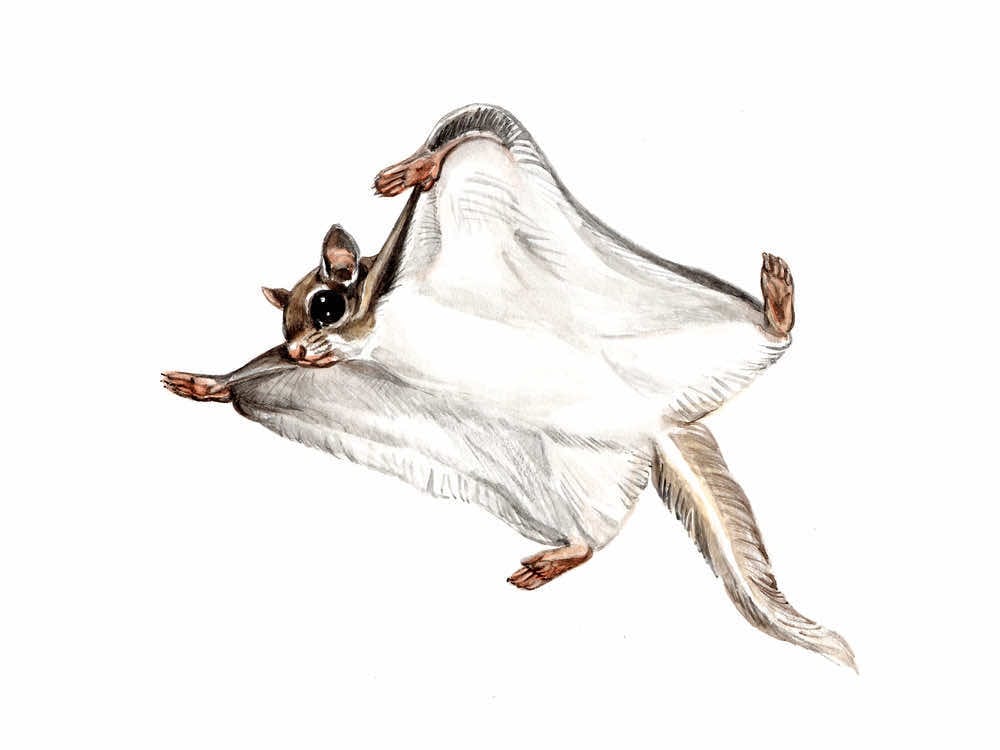Flying Squirrels
Description
- Northern flying squirrels (Glaucomys sabrinus) and southern flying squirrels (Glaucomys volans) are the only two native flying squirrel species found in North America. They are both gray-brown, but the northern flying squirrel has belly fur that is gray at the base, and for the southern flying squirrel the belly fur is all white. Flying squirrels might more appropriately be called “gliding squirrels,” because they aren’t capable of true powered flight that a bird or a bat can do. Flying squirrels glide. They have a special membrane between their front and back legs that allow them to glide through the air between trees. When a flying squirrel wants to travel to another tree without touching the ground, it launches itself from a high branch and spreads out its limbs so that the gliding membrane is exposed. It uses slight movements of the legs to steer, and the tail acts as a brake upon reaching its destination. Flying squirrels can cover more than 150 feet in a single glide!
Diet
- Flying squirrels are omnivores. They eat a variety of foods including seeds, nuts, fungi, fruit, and insects. Southern flying squirrels are considered to be one of the most carnivorous squirrels because they supplement their diet with eggs, birds, and carrion.
Size
- Size is one way to tell northern and southern flying squirrels apart. The southern species is smaller, about 8 to 10 inches in length. Northern flying squirrels are 10 to 12 inches long.
Habitat
- Flying squirrels live in deciduous and coniferous forests and woodlands. They make their homes in woodpecker holes, nest boxes, and abandoned nests of birds and other squirrels. Sometimes multiple squirrels will nest together to keep warm in the winter.
Range
- The southern flying squirrel is found throughout the eastern U.S., from Maine south to Florida and west from Minnesota south to Texas. The Northern flying squirrel has a much patchier distribution, but is found primarily in the northeast, along the west coast, and into Idaho and Montana.
Lifespan
- Flying squirrels can live up to 10 years in captivity, or about half that in the wild.
Life, History, Reproduction & More
- The northern flying squirrel mates once per year, but the southern flying squirrel mates twice. When the young are born, they rely on their mothers to care for them for two months. Humans have long been envious of the flying squirrel’s gliding abilities. Base jumpers and skydivers have developed a special suit that mimics the flying squirrel. The suit works to slow their descent and allows them to maneuver through the air. Flying squirrels are common rodents in many parts of the country, but because they are nocturnal, few people ever see them. Two subspecies of northern flying squirrel are federally listed as endangered due to habitat loss.
Have a Wildlife Problem?
Call us today or schedule an appointment to find out for yourself why NJ Pest are the experts in wildlife removal and control services. You can count on to get the job done!

